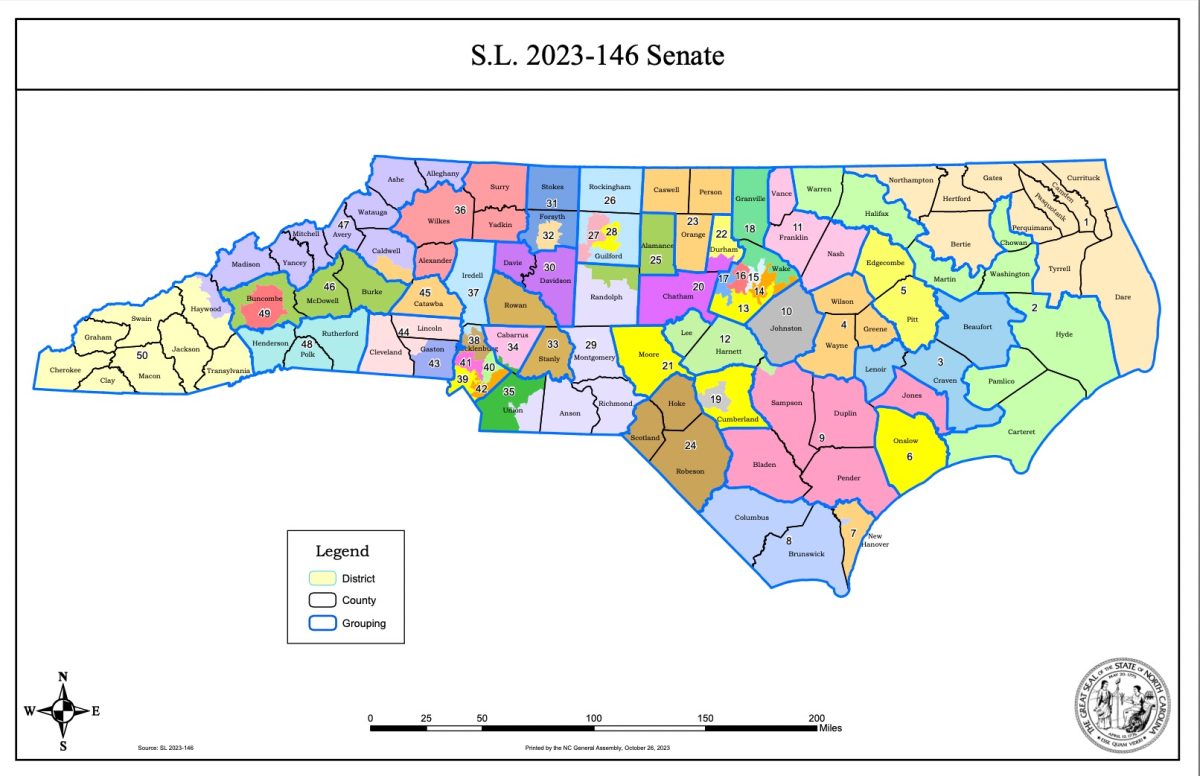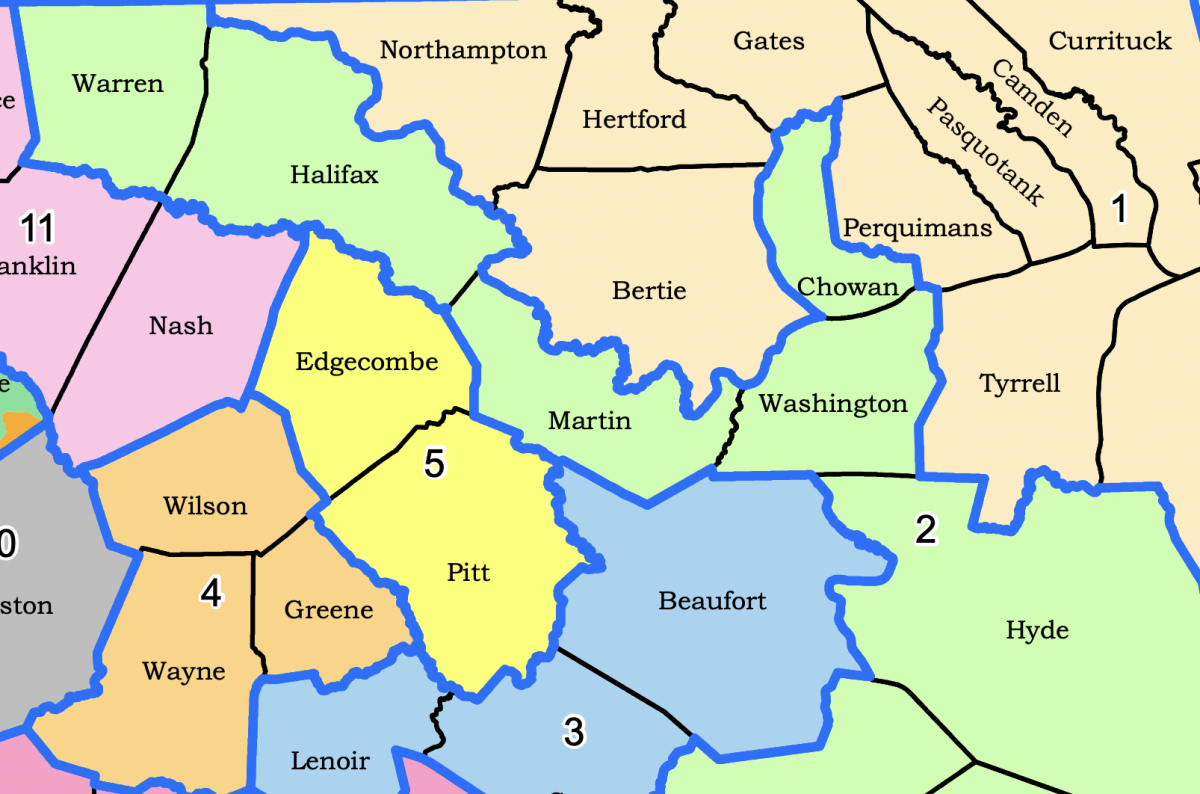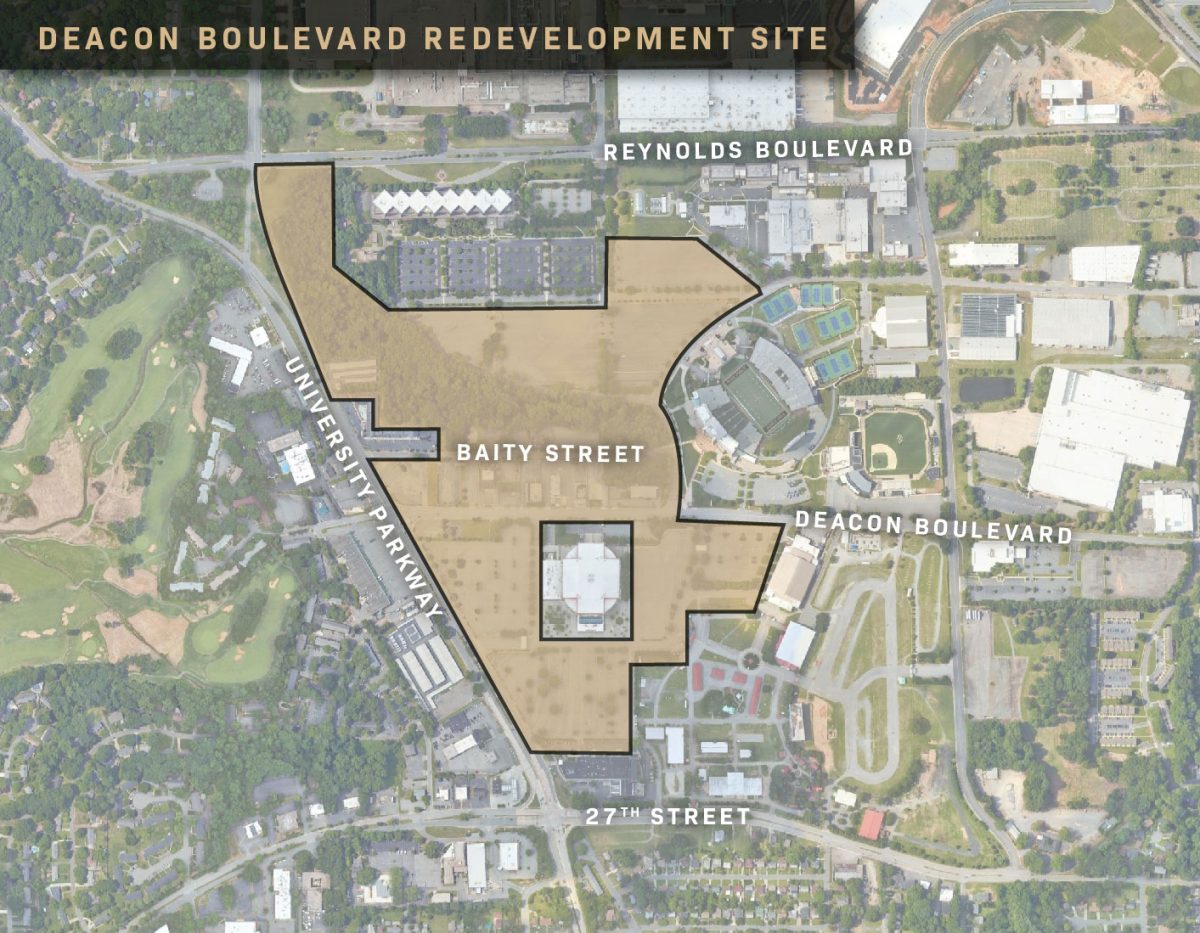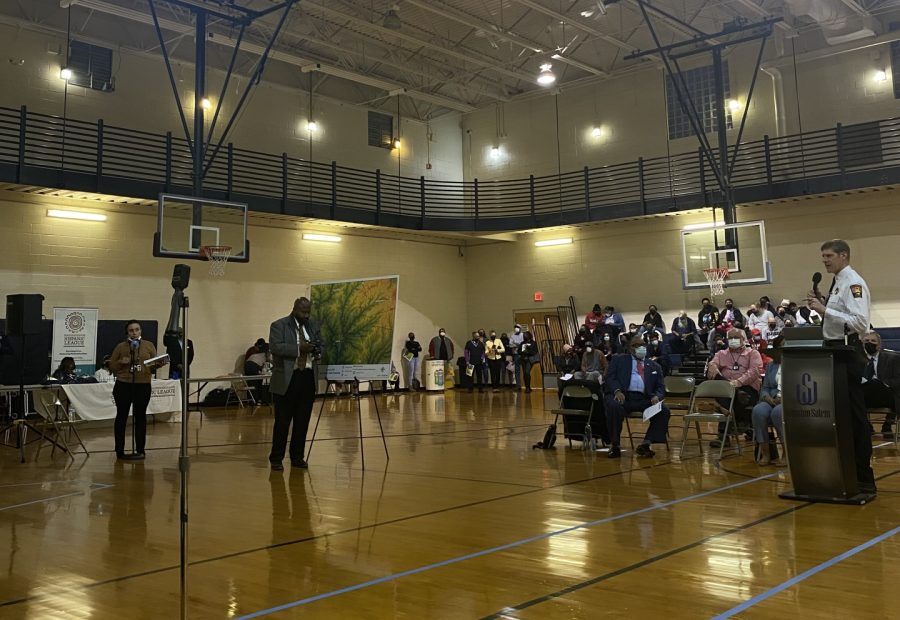Two North Carolina residents are suing the Republican-led NC legislature over their recently enacted Senate district maps. The plaintiffs alleged the state’s new Senate district maps passed last month violate the 1965 Voting Rights Act (VRA), disproportionately harming Black voters in the northeast part of the state.
They say the Senate maps, which were just one set of district maps that were created last month by the General Assembly (including the NC House and the U.S. House of Representatives maps), are racially gerrymandered — diluting the votes of Black voters in the state’s historic “Black Belt” by failing to establish sufficient majority-minority districts.
The new congressional maps split the Triad up into four Congressional districts, virtually eliminating Rep. Kathy Manning’s (D) seat. The maps will likely face lawsuits, according to analysts. This case is the kickoff for the latest chapter in North Carolina’s long history of redistricting litigation.
The lawsuit faces serious obstacles from the starting line, however.
On Nov. 20, a federal Appeals Court ruled that only federal entities could use Section 2 of the Voting Rights Act to challenge gerrymandered maps. The same VRA provision undergirds the challenge in Matthews and countless other redistricting-based litigation.
By all accounts, the case is likely to be appealed to the Supreme Court, posing the most significant threat to the VRA’s efficacy since Shelby v. Holder removed federal preclearance rules in 2013.
The following week, on Monday, Nov. 27, a US district judge denied a request to fast track the lawsuit, which would have allowed for a hearing before the Dec. 4 candidate filing deadline.
NC’s Redistricting, past and present
The new 2023 North Carolina district maps were unveiled and passed within an extraordinary and controversial timeline of just one week, from Oct. 18-25.
Redistricting cycles coincide with the once-a-decade U.S. census, but this is the third set of district maps North Carolina has produced since 2020.
The maps the Republican majority drew in 2021 were tossed out by the then-liberal-leaning North Carolina Supreme Court, who concluded the maps violated the state’s constitution in Harper v. Hall and directed the appointment of a special master to redraw the district maps independently. Those maps were used in the 2022 election.
House Speaker Tim Moore sued to question the high-court’s ruling in 2022 by questioning their authority to appoint a special master. This high-stakes test of federalism culminated in Moore v. Harper this summer. But while Moore wrapped up, they relitigated Harper v. Hall to the new Republican majority on the North Carolina Supreme Court and found the relief they were seeking. In April 2023, the court tossed out the 2022 maps and the process restarted, meaning new maps needed to be drafted up ahead of the 2024 election.
The latest challenge
Section 2 of the VRA protects voters from discriminatory voting practices on the basis of their skin color. In the redistricting process, states are legally compelled by the VRA to create districts that do not dilute the power of minority voters. Current jurisprudence has practically achieved this by purposefully creating majority-minority districts around demographically cohesive blocks of voters. Similarly, putting a block of voters from racial minorities into a larger, white district — diluting their vote as a result — is illegal under federal law.
The focal point of the recent suit, the Senate map’s District 2, encompasses a part of North Carolina’s historic “Black Belt,” a strip of fertile soil more than 100 miles long that historically housed a significant portion of North Carolina’s cotton industry and plantations. Today, many of the “Black Belt” counties have a Black, voting-age population ranging from 30-50% — well above the state average of 21%, according to the 2020 Census.
In the 2023 maps these counties are divided between Districts 1 and 2 — with the second district stretching from the Virginia border near Interstate 85 to the Outer Banks.
Instead of splitting or “cracking” the “Black Belt” between the two districts, the plaintiffs suggest it would be feasible to create a VRA-compliant majority-minority district out of the area with minimal impact on the rest of the map.
The plaintiffs also asserted the legislature was well aware of their ability to create a majority-minority district in northeastern North Carolina. A letter given to the Republican majority by the Southern Coalition for Racial Justice (SCRJ) made that clear, they say.
“[The letter] enclosed expert analysis finding evidence of racially polarized voting in the Black Belt counties in recent elections,” the lawsuit said, “and that urged the General Assembly to conduct its own examination of racially polarized voting.”
“Nonetheless, the General Assembly either failed to conduct or failed to consider any Voting Rights Act analysis with respect to its 2023 state Senate plan,” the lawsuit continued.
The 2023 maps, explained
According to a report from the non-partisan Quantifying Gerrymandering group at Duke University, the new maps drawn by legislature are, “more gerrymandered and less responsive than maps struck down in 2021.”
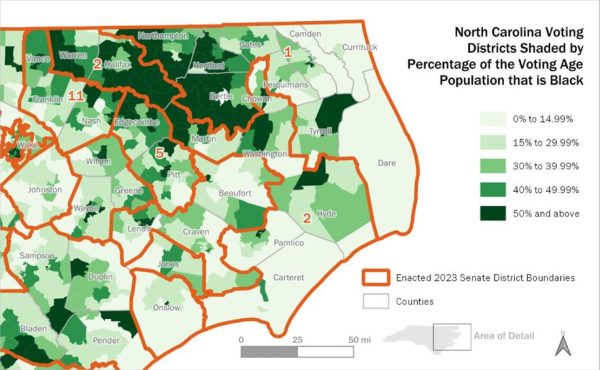
“Under these votes, both proposed maps [from SB756 and SB757] would elect 11 Republicans and three Democrats to the U.S. House of Representatives while the remedial [2022] map it replaces would have elected seven Republicans and seven Democrats,” the group said.
The report continued: “The proposed congressional maps are both highly non-responsive to changes in the opinion of the electorate.”
The new congressional map upends a number of high-profile congressional seats, including District 14’s Rep. Jeff Jackson (D), who has gained popularity for his social media presence. Jackson responded to the elimination of his seat by announcing he was running for North Carolina’s attorney general. Current Attorney General Josh Stein, a Democrat, will be running for Governor in 2024. The
Closer to home, Rep. Kathy Manning (D), who represents parts of the Triad, though not the portion of Forsyth County in which Wake Forest resides, was drawn out of her seat. Manning has served since 2021 but is unlikely to win re-election with the new district makeup. Wake Forest is represented by Rep. Virginia Foxx (R), who has been in Congress for longer than some Wake Forest students have been alive. She is seeking re-election in 2024.
The 2022 senate maps infamously split Wake Forest’s campus in half, giving students different representation depending on which dorm they live in. In 2023, that district, District 32, covers the whole campus. This district is currently represented by Sen. Paul Lowe (D), who has served in the seat for almost a decade. He is up for re-election in 2024.
Gov. Roy Cooper, who is finishing up the second of his only two possible terms, expressed his outrage with the new districts in a press release following their passage.
“Drawn in the back room and armed with their new law that keeps their plotting secret, they have used race and political parties to create districts that are historically discriminatory and unfair,” Cooper said.
Phil Berger, the Republican Senate Pro Tempore, disagreed, suggesting Democrats just need to compete more in larger, rural districts.
“I think those are fair maps…There’s not a defined legal standard of what ‘fair’ is. And I don’t think you can come up with one,” Berger said on the “Tying it Together” podcast.
Cooper’s objections are moot under state law, however. In North Carolina, the Governor is unable to veto district maps. Such action wouldn’t have been feasible either, given that Rep. Tricia Cotham’s party switch earlier this spring gave Republicans a veto-proof supermajority in the General Assembly. Cotham was drawn into a favorable district with an almost seven-point Republican lean in the 2023 redistricting cycle.
It is unclear the path this case will take given the federal Appeals Court ruling, but in the short term, the maps are likely to remain. However, further litigation is all but assured.
Next week’s candidate filing deadline will likely be the first real glimpse into the full impact of the 2023 district maps — the culmination of N.C. Republicans’ nearly decade-long effort.


